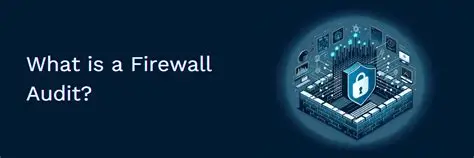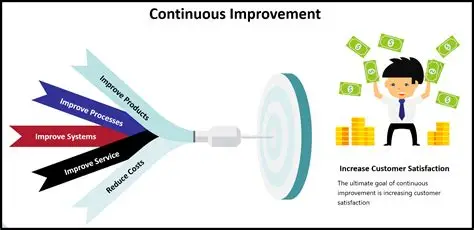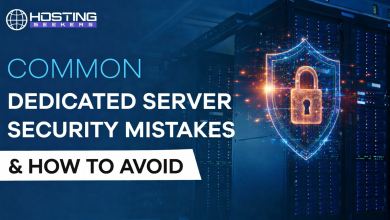
Network security teams face mounting pressure to balance operational agility with regulatory compliance. When auditors come knocking, organizations with poor firewall policy change management often scramble to piece together documentation, justify modifications, and demonstrate control over their security infrastructure. This reactive approach not only wastes valuable resources but can also expose critical vulnerabilities in your defense strategy.
Effective firewall policy change management creates a structured framework that maintains security integrity while meeting compliance requirements. By implementing proven practices, organizations can transform what’s often a chaotic process into a streamlined operation that satisfies both operational needs and audit expectations.
Building a Strong Foundation: Mastering Compliance Requirements
Before diving into implementation tactics, you need to understand what auditors actually seek. Regulatory frameworks like SOX, PCI DSS, and HIPAA don’t just require firewalls—they demand demonstrable control over how those firewalls evolve over time.
Auditors typically examine three key areas: change authorization processes, documentation trails, and evidence of ongoing monitoring. They want to see that every modification follows established procedures, creates appropriate records, and undergoes proper review. Organizations that treat firewall changes as ad-hoc technical tasks often struggle to meet these expectations.
The financial implications are significant. Companies failing compliance audits face penalties averaging $14.8 million annually, according to recent studies. Beyond monetary costs, failed audits damage reputation and can trigger increased regulatory scrutiny that persists for years.
Documentation: Your Audit Shield
Comprehensive documentation serves as your primary defense during audits. However, effective firewall policy change management documentation goes beyond simple logging—it tells the complete story of each modification.
Start with standardized change request templates that capture essential information: business justification, risk assessment, implementation details, and rollback procedures. These templates should require specific fields that auditors commonly review, including change requestor identity, approval timestamps, and impact analysis results.
Create detailed implementation records that document not just what changed, but how and when. Include screenshots of configuration before and after modifications, command histories from administrative sessions, and verification test results. This granular approach demonstrates thoroughness that auditors appreciate.
Maintain relationship mapping between firewall rules and business processes. When auditors question why specific policies exist, you should quickly demonstrate their connection to legitimate business requirements. This mapping also helps identify orphaned rules that may represent security risks.
Version control becomes critical for larger environments. Implement systems that track configuration snapshots, enabling you to demonstrate the evolution of your firewall posture over time. Many organizations discover that seemingly minor rule modifications can have cascading effects that become apparent only through comprehensive version tracking.
Automation: Consistency and Efficiency
Manual firewall policy change management processes inevitably introduce human error and documentation gaps. Automation tools address these challenges while creating the consistent audit trails that compliance teams require.
Deploy change management platforms that enforce workflow requirements. These systems prevent unauthorized modifications by routing all changes through established approval processes. They also generate automated documentation that captures every step of the change lifecycle, from initial request through final implementation.
Implement policy analysis tools that automatically assess proposed changes for conflicts, redundancies, and security implications. These tools can flag modifications that might violate compliance requirements before implementation occurs. Some advanced platforms even suggest alternative approaches that achieve business objectives while maintaining security standards.
Consider automated testing frameworks that validate firewall functionality after changes. These systems can run standardized test suites to ensure that modifications don’t inadvertently disrupt legitimate traffic or create security gaps. The test results become valuable audit evidence demonstrating due diligence.
Integration with existing IT service management tools creates seamless workflows that reduce friction for technical teams while maintaining compliance oversight. When firewall changes integrate naturally with broader change management processes, adoption improves dramatically.
Regular Review Cycles: Continuous Improvement
Effective firewall policy change management requires ongoing evaluation of both policies and processes. Regular review cycles identify optimization opportunities while ensuring continued compliance alignment.
Establish quarterly policy reviews that examine firewall rules for continued relevance. Many organizations accumulate outdated policies that create unnecessary complexity and potential security risks. Systematic reviews help identify and remove these obsolete configurations.
Conduct annual process assessments that evaluate your change management procedures against current compliance requirements and industry best practices. Regulatory frameworks evolve, and your processes should adapt accordingly. These assessments often reveal opportunities to streamline workflows while improving audit readiness.
Implement metrics tracking that measures key performance indicators like change success rates, rollback frequency, and documentation completeness. These metrics help identify trends that might indicate process weaknesses or training needs.
Create feedback mechanisms that capture input from both technical teams and compliance personnel. The most effective processes balance operational efficiency with audit requirements, and regular feedback helps maintain this balance as organizational needs evolve.
Collaboration: Breaking Down Silos
Successful firewall policy change management requires coordination between traditionally separate teams. IT operations, security personnel, and compliance specialists must work together to create processes that satisfy everyone’s requirements.
Establish cross-functional change advisory boards that include representatives from all relevant teams. These boards review proposed modifications for technical feasibility, security implications, and compliance impacts. Their diverse perspectives often identify issues that single-team reviews miss.
Create shared communication channels that keep all stakeholders informed about planned changes and their progress. Many organizations use collaborative platforms that provide real-time visibility into change status, enabling proactive coordination and issue resolution.
Develop training programs that help each team understand others’ requirements and constraints. When operations teams understand compliance needs, they’re more likely to provide complete documentation. Similarly, compliance teams that understand operational pressures can suggest more practical approaches to meeting regulatory requirements.
Implement joint incident response procedures that bring teams together when firewall changes cause problems. These procedures should define clear escalation paths and recovery responsibilities while maintaining proper documentation throughout the resolution process.
Technology Integration: Seamless Operations
Modern firewall policy change management benefits significantly from integration with broader security and IT management ecosystems. These integrations create comprehensive visibility while reducing manual coordination overhead.
Connect firewall management tools with security information and event management (SIEM) systems to correlate policy changes with security events. This integration helps identify whether modifications create unexpected vulnerabilities or impact existing security controls.
Link change management platforms with configuration management databases (CMDBs) to maintain accurate asset relationships. When firewall policies change, the CMDB should reflect these modifications and their potential impacts on dependent systems.
Integrate with identity and access management systems to ensure that only authorized personnel can request and approve firewall modifications. These integrations create stronger access controls while generating detailed audit trails of user activities.
Connect monitoring systems that track firewall performance and security metrics. When changes impact network performance or security posture, integrated monitoring provides immediate feedback that enables rapid corrective action.
Moving Forward: Implementation Strategies
Organizations beginning their firewall policy change management improvement journey should start with foundational elements before adding advanced capabilities. Begin by standardizing documentation requirements and establishing clear approval workflows. These basics create immediate audit value while laying groundwork for more sophisticated approaches.
Focus on tool selection that balances functionality with organizational readiness. The most feature-rich platform won’t succeed if your teams lack the skills or time to use it effectively. Consider phased implementations that gradually introduce advanced capabilities as teams develop expertise.
Measure progress through specific, actionable metrics rather than generic compliance scores. Track documentation completeness rates, change approval timeframes, and audit finding resolution speeds. These concrete measures demonstrate improvement while identifying areas needing additional attention.
Remember that effective firewall policy change management is ultimately about creating sustainable processes that protect your organization while enabling business objectives. The investment in proper procedures pays dividends through reduced audit stress, improved security posture, and enhanced operational efficiency that benefits everyone involved.






